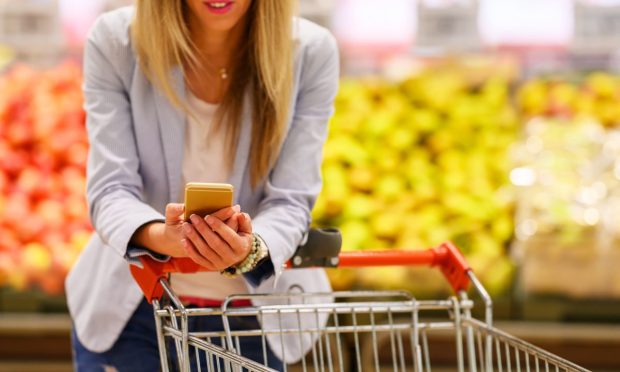Grocers Raise the Personalization Bar in Race for Digital Loyalty

Grocers are investing heavily in stepping up their ability to personalize the digital experience with consumer data, and these efforts, PYMNTS research suggests, are paying off.
Grocers, consumer-packaged goods (CPG) brands and solution providers alike will be gathering virtually on Monday (June 12) evening to hear about personalization from PepsiCo Global Head of Media Partnerships, Innovation and Marketing Capabilities Abhishek Jadon, as part of the Digital Food & Beverage Conference. PYMNTS research reveals that these kinds of capabilities are increasingly becoming table stakes.
Indeed, data from PYMNTS’ study “Retail Payments Innovation Year in Review: How Real-Time Payments Drive the in-Store Customer Journey,” which drew from a survey of 300 major U.S. and U.K. retailers, found that 50% of grocers are currently innovating their ability to track customer purchase history across all channels. Plus, 37% are stepping up their data analytics capabilities, and 32% are investing in improving their loyalty programs.
In fact, in the last month alone, many grocers and other businesses that rely on grocery sales have been stepping up their personalization efforts.
Instacart, for instance, recently announced the launch of its ChatGPT-integrated Ask Instacart tool offering personalized recommendations. Shipt, the Target-owned delivery aggregator, launched a dashboard with personalized offers. Canadian grocer METRO Inc., which has nearly 1,000 stores, announced a new, more personalized rewards program. The Save Mart Companies launched a retail media network to offer CPG brands the chance to deliver more personalized offers.
Category giants are investing heavily in their personalization capabilities. Take, for instance, Kroger, the United States’ largest pure-play grocer. In a ShopTalk 2023 discussion, Yael Cosset, Kroger’s chief information officer and senior vice president, spoke to the company’s data efforts, per an announcement earlier this spring.
“Investment in data and innovation during the last two decades — focusing on the customer experience — created immense value, saving customers $1.4 billion just last year,” Cosset said. “Kroger pioneered the personalization approach because we wanted to understand how customers engaged with our offers to make them better and more relevant. Our best-in-class data science program creates personalized experiences that provide important savings on the very specific items we know our customers love.”
Similarly, earlier this year, Michigan-based supermarket chain Meijer, which has more than 500 stores across the Midwest and Kentucky, announced the launch of an update to its mPerks loyalty program to improve its rewards personalization capabilities.
It seems that personalized experiences that grocers can provide on digital channels prove effective at driving sales, given eGrocers’ stronger customer loyalty relative to their brick-and-mortar counterparts.
Specifically, research from the latest edition of PYMNTS’ Consumer Inflation Sentiment study, “Consumer Inflation Sentiment: The False Appeal of Deal-Chasing Consumers,” which draws from a survey of more than 2,100 U.S. consumers, finds that 27% of shoppers who are highly brand loyal made their most recent grocery purchase online. In contrast, only 18% of those whose purchasing decisions are motivated by deals did the same. As such, eCommerce shoppers are 50% more likely to be highly loyal.
In fact, grocers can use these personalization capabilities to mimic some of the benefits of face-to-face service that could get lost in translation.
“Loyalty programs can create the sense of recognition and engagement no different than if you walk in one of our stores where you’ve been shopping for 20 years, and we say, ‘Hey, Mrs. Jones, how are you?’” John Ross, president and CEO of the Independent Grocers Alliance (IGA), told PYMNTS in an interview. “Digital technology does allow you to replicate a lot of the effects of high quality of service.”
